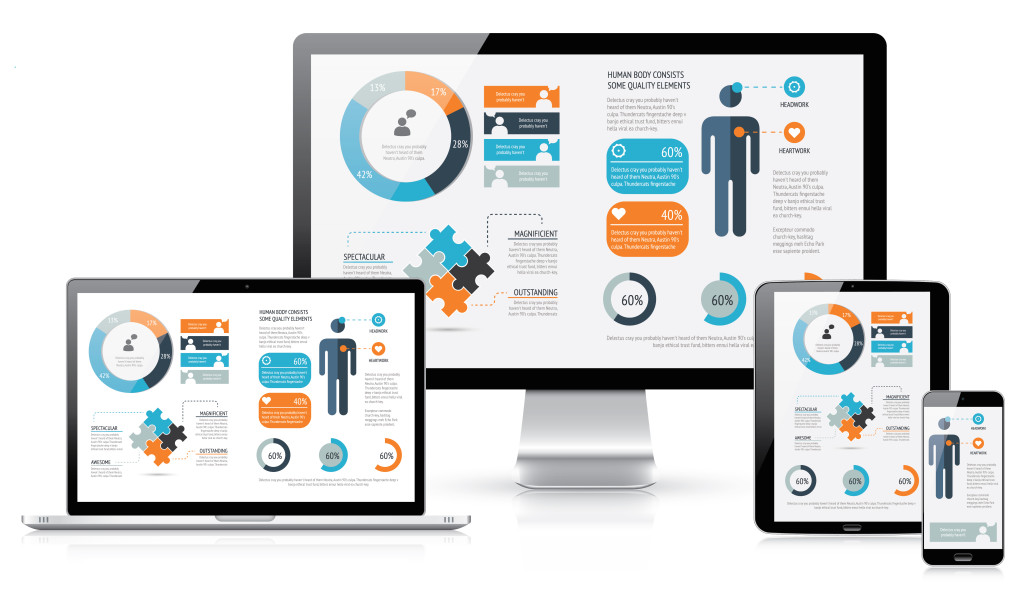The Future of Digital Marketing: Web Design Pretoria Trends to Enjoy
The Future of Digital Marketing: Web Design Pretoria Trends to Enjoy
Blog Article
A Comprehensive Guide to Responsive Web Design Techniques
Receptive web design has come to be a crucial component in the development of electronic platforms, permitting a smooth individual experience across a multitude of gadgets. This guide will certainly check out essential methods such as fluid layouts, media inquiries, and image optimization that add to effective responsive design. By recognizing these concepts, developers can produce sites that not just adapt aesthetically however additionally improve customer interaction. Nonetheless, the landscape of website design is constantly advancing, raising questions regarding the future of responsiveness and the methods that will specify it.
Recognizing Responsive Internet Style
Receptive website design (RWD) is a method that ensures a website's layout and content adapt flawlessly across a selection of gadgets and screen sizes (Web Design Pretoria). This design technique is important in today's digital landscape, where customers accessibility web sites from smart devices, tablet computers, laptops, and desktop. RWD enhances customer experience by allowing an internet site to keep performance and appearances, regardless of the device being made use of
In addition, media questions are utilized to apply different designs based on device characteristics like screen size and alignment. This strategy ensures that the internet site's style is tailored to the specific demands of customers, boosting use.
Moreover, RWD adds positively to look engine optimization (SEARCH ENGINE OPTIMIZATION) by advertising a single, regular link for a website, which streamlines web link sharing and indexing. As mobile phone use remains to increase, understanding and implementing receptive internet design is crucial for services aiming to get to a wider audience and boost overall web efficiency.
Trick Principles of Responsive Design
To create an efficient responsive layout, a number of vital concepts have to be thought about. A mobile-first approach is crucial. This implies making for the smallest screens first and considerably enhancing the format for bigger gadgets. This strategy guarantees that the necessary content is prioritized and easily accessible on all screens.
Second, adaptable grids and formats are crucial. Using a grid system that adapts to different screen dimensions enables an unified distribution of content, ensuring readability and functionality across devices. This flexibility is matched by the use of loved one units, such as ems or percentages, as opposed to repaired pixels.

Last but not least, prioritizing material pecking order is crucial. Clear and sensible company of web content improves individual experience, leading visitors through the site flawlessly, despite the device utilized. Web Design Pretoria. By adhering to these principles, designers can create internet sites that are not only aesthetically enticing yet user-centered and also useful throughout all gadgets
Techniques for Fluid Layouts
Fluid layouts are crucial for developing adaptive web experiences that effortlessly readjust to numerous screen sizes. By utilizing percentage-based sizes rather than dealt with pixel values, developers can ensure that elements on a page resize proportionally, preserving visual harmony throughout devices. This strategy advertises adaptability, enabling content to adapt and flow as the viewport changes.
One reliable approach for achieving fluid designs is to utilize CSS Flexbox or Grid systems. These CSS modules make it possible for designers to create responsive structures that can quickly resize and reorganize based on the offered room. Flexbox succeeds in one-dimensional layouts, while Grid is ideal for two-dimensional plans, supplying higher control over positioning and placement.
An additional strategy includes making use of media questions to specify breakpoints where modifications are necessary - Web Design Pretoria. By defining different styles for different display sizes, developers can change format homes dynamically, making sure optimal functionality and aesthetic allure
Additionally, incorporating relative systems like ems or rapid eye movements for font dimensions and spacing can additionally boost fluidity, as these units range based upon individual settings or moms and dad aspects. Together, these methods facilitate the growth of liquid designs that advertise an appealing user experience across diverse devices.
Maximizing Images for All Gadgets
Photos play a crucial duty in website design, and enhancing them for numerous tools is crucial for improving performance and individual experience. To achieve this, developers need to utilize responsive picture methods that ensure pictures show properly throughout different display dimensions and resolutions.
One reliable technique is utilizing the HTML" aspect, which enables for specifying multiple picture sources based upon the display screen conditions. By employing 'srcset' characteristics, developers can give different image resolutions, enabling the web browser to pick the most proper one for the user's tool.
Additionally, implementing correct file layouts is vital. Layouts such as JPEG, PNG, and WebP each offer unique functions and can significantly impact packing times. WebP, for example, uses premium compression, leading to smaller sized file dimensions without compromising high quality.
One more important facet is picture compression. Devices like TinyPNG or ImageOptim can reduce documents dimensions, enhancing loading speed while maintaining aesthetic integrity. Making use of CSS for background images can improve loading as they can be controlled more fluidly across tools.
Ultimately, optimizing pictures not just enhances website performance yet additionally adds to far better user engagement and retention, making it an essential technique in responsive internet layout.
Preserving and examining Responsiveness
Guaranteeing a seamless user experience throughout various tools calls for persistent screening and maintenance of responsiveness. The initial step in this process is to use a combination of manual and automated screening devices. Tools such as Google's Mobile-Friendly Test and BrowserStack permit programmers to sneak peek just how their internet sites carry out throughout several tools and display sizes Get More Info properly.
Furthermore, it is more info here necessary to carry out normal audits of your site's layout and performance. This includes monitoring for breakpoints, making sure components resize appropriately, and verifying that navigating stays user-friendly. In addition, screening ought to not be limited to aesthetic aspects; functionality across various internet browsers and devices have to be examined to recognize any kind of inconsistencies.

Conclusion
Finally, the execution of responsive website design methods is important for creating versatile sites that improve user experience throughout diverse devices. By adhering to essential concepts such as liquid grids, media queries, and versatile formats, together with enhancing photos and utilizing responsive frameworks, developers can attain visual charm and boosted loading speeds. Continuous testing and upkeep additional ensure that sites stay practical and visually pleasing, ultimately adding to enhanced customer engagement and contentment.
Responsive internet design has actually ended up being an essential part in the growth of electronic platforms, allowing for a seamless customer experience throughout a visit this page plethora of tools.Responsive web style (RWD) is a technique that guarantees a website's layout and content adjust seamlessly across a selection of gadgets and display sizes. RWD enhances customer experience by enabling a site to maintain functionality and visual appeals, no matter of the tool being made use of.
Making certain a seamless customer experience across different devices requires attentive screening and maintenance of responsiveness.In verdict, the application of responsive web style methods is important for creating adaptable web sites that improve individual experience across diverse gadgets.
Report this page